Here Is What You Should Prepare For Your Capgemini Interview
Mar 13, 2025 10 Min Read 3274 Views
(Last Updated)
Worried about How to crack your Capgemini Interview? Learn how to do it with a step-by-step guide that has a proven record of success. Just follow the below course of action.
Capgemini SE is a French multinational professional services and business consulting corporation headquartered in Paris, France. It is one of the world’s largest management consulting and professional services companies with over 200,000 employees in over 40 countries, of whom nearly 100,000 are in India.
Table of contents
- Recruitment Process:
- Academic Criteria:
- WRITTEN TEST
- Quantitative Aptitude Questions and Answers Model
- Logical Reasoning Questions and Answers
- Essay Writing
- Questions
- Pseudocode Questions and Answers Model
- GROUP DISCUSSION TOPICS
- Capgemini Technical Interview Questions and Answers
- Capgemini HR Questions
Recruitment Process:
1. Written Test 2. Group Discussion 3. Technical Interview 4. HR Interview
Academic Criteria:
1) A candidate must have more than 60% marks in 10th and 12th (or diploma). 2) A candidate must have a minimum of 60% marks in graduation. 3) A maximum gap of 1 year is permissible after HSC(12th) and not after SSC(10th) or in between semesters of graduation</span>
WRITTEN TEST
The Written Test Pattern :
1.Quantiative Aptitude 2.Logical Reasoning 3.Essay Writing 4.Pseudo Code Round
Quantitative Aptitude Questions and Answers Model
Is there any negative marking in CapGemini online test?
The test conducted in CG is to check your aptitude and problem-solving skills. There is no negative marking for the tests. You have to get a minimum cut off which depends on the numbers.
Before you continue, ensure you’re equipped to ace interviews with our comprehensive placement preparation platform.
1. The average mark of three students A, B & C is 50. When another student D joins the group, the new average becomes 45. Additionally, if another student E who has scored 6 marks more than D, joins the group, the average of the 4 students B, C, D & E becomes 50 marks. How many marks did A get in the exam?
Sol: Since the average marks of A, B & C is 50, A+B+C = 50×3=150
New average marks with D =45, A+B+C+D=180
From equations 1 and 2, D=30
So, E =36.
Since, the average of 4 students B, C, D & E is 50, B+C+D+E=200
Using equations 3 & 4, we get B+C=134
From Equation 1, A=16.
2. A computer printed 24960 lines in a day. If the computer worked for 8 hours in the day, how many lines did it print in a minute?
Sol: number of minutes in 8 hours=8×60=480
Number of lines printed in a minute=24960/480=52
3. An 18 storied building has 24000 sq. feet on each floor. Company A rents 8 floors and company B rents 5 floors. What is the amount of unrented floor space?
Sol: Total number of floors rented=8+5=13
Unrented Space=18-13=5×24000=120000
4. Eight liters of water is added to 24 liters of a solution containing milk and water in the ratio 3:1 What is the ratio of milk to water in the resulting solution?
Sol: From the question, V initial = 24L
V final=24+8=32L
V initial/V Final=3:4
C initial/ C final=4:3
C final=C initial×(3/4)=(3/4) ×(3/4)=9/16
Hence, the ratio of milk and water is 9:7
5. The area of the largest rectangle that can be inscribed in a particular circle is 784sq.cm What is the area of the circle?
Sol: The diagonal of the rectangle is equal to the diameter of the circle.
The largest rectangle occurs when the sides of the rectangle are equal making it a square.
A line passing from the center will always make a right angle at the perimeter of the circle.
Let the side of the square be a. The area of the square is a²
a²=784; a=28 cm
Hence, the diameter of the circle=28×√2
Radius=14×√2
Area of the circle=πR²=1232sq.cm
6. If a clerk can process 90 cheques in a day, how many cheques can she process in 8 and a half days?
Sol: 90×8.5=765
7. If the digits of my present age are reversed, I get the age of my son. If one year ago, my age was twice that of my son, find my present age.
Sol: Let my present age be xy=10x+y
If the digits are reversed, age=10y+x
My age two years ago, 10x+y-1
Age of my son two years ago, 10y+x-1
According to the equation, 10x+y-1=2(10y+x-1)
By trial and error method, one can arrive at the present ages of father and son as 73 and 37 respectively.
8. By increasing his speed by 10km/hr, a person reduced his travel time from 40 minutes to 32 minutes. How much time does he take to cover 60 km with his new speed?
Sol: Let the initial speed be s1km/hr and final speed be s2km/hr respectively.
According to the question, S1(40/60)=(S1+10)(32/60)
5S1= 4S1+40; S1= 40;
Time taken to cover 60 km= 60/50=1.2 hrs.
9. The sum of a number and the two numbers preceding it is equal to 30. Find the number:
a.10
b.11
c.9
d.8
Sol: Option C
The number is 9,
As 9 +10+11=30
10. Sanjay invested an amount of Rs 16,000 for two years on compound interest and received an amount of RS 17,640 on maturity. What is the rate of interest per annum?
a.4%
b.5%
c.8%
d.Data Inadequate
Sol: Option B
Amount =P(1+r/100)2
17640/16000= (1+r/100)2
441/400= (1+r/100)2
=> (21/20)2= (1+r/100)2
R=5%
11.Six pipes are fitted to a water tank. Some of these are inlet pipes and the others outlet pipes. Each inlet pipe can fill the tank in 9 hours and each outlet pipe can empty the tank in 6 hours. On opening all the pipes, an empty tank is filled in 9 hours. How many inlet pipes are there?
a. 2
b. 4
c. 3
d. 5
Sol: Option b
x / 9 – y / 6 = 1/9;
2x – 3y = 2
We can compute that x = 4 and y = 2.
Thus, Inlet pipe = x = 4.
12. A reservoir is provided by two pipes A and B. A can fill the reservoir 5 hours faster than B. If both together fill the reservoir in 6 hours, the reservoir will be filled by A alone in
a. 12 hours
b. 8 hours
c. 10 hours
d. 11 hours
Sol: Option c
If x is the speed then speed of A= x + 5 and B = x
Time taken by A and B will be x and x + 5 resp.
1/x + 1/x + 5 = 1/6 ; x2 – 7x – 30 = 0 x = -3 or x = 10.
Since time can’t be negative, x =10.
13. A dealer buys dry fruits at the rate of 100, 80 and ` 60 per kg. He bought them in the ratio of 12: 15: 20 by weight. He in total gets 20% profit by selling the first two and at last, he finds he has no gain or no loss in selling the whole quantity which he had. What was the percentage loss he suffered for the third quantity?
a. 30%
b. 40%
c. 20%
d. 50%
Sol: Option b
Total quantity rate =
(12 * 100 + 15 * 80 + 20 * 60) = 3600
For first 2 quantity, (12 * 100) + (15 * 80) = 2400
But he gets 20% profit = 2400 * 1.2 = 2880
So the third quantity = 3600 – 2880 = 720
Actual third quantity rate = 20 * 60 = 1200
Loss suffered = (1200 – 720) / 1200
= 480/1200 = 40
14. A, B, and C started a business with a capital of Rs. 8000, Rs. 10000 and Rs. 12000 respectively. At the end of the year, the profit share of B is Rs. 1500. The difference between the profit shares of A and C is?1.Rs. 300
2.Rs. 400
3.Rs. 500
4.Rs. 600
5.None of these
Answer: Option 5
Solution
The ratio of investments of A, B, and C is 8000: 10000: 12000 = 4: 5: 6
And also given that, the profit share of B is Rs. 1500
=> 5 parts out of 15 parts are Rs. 1500
Now, required difference is 6 – 4 = 2 parts
Required difference = 2/5 (1500) = Rs. 600
15. If Rs. 510 be divided among A, B, C in such a way that A gets 2/3 of what B gets and B gets 1/4 of what C gets, then their shares are respectively?
a. Rs. 120, Rs. 240, Rs. 150
b. Rs. 60, Rs. 90, Rs. 360
c. Rs. 150, Rs. 300, Rs. 60
d. None of these
Answer: Option b
Solution
(A = 2/3 B and B = 1/4 C) = A/B = 2/3 and B/C = 1/4
A:B = 2:3 and B:C = 1:4 = 3:12
A:B:C = 2:3:12
A;s share = 510 * 2/17 = Rs. 60
B’s share = 510 * 3/17 = Rs. 90
C’s share = 510 * 12/17 = Rs. 360.
16. The current of a stream runs at the rate of 4 kmph. A boat goes 6 km and back to the starting point in 2 hours. Find the speed of the boat in still water?
1. 10 kmph
2. 21 kmph
3. 8 kmph
4. 12 kmph
Answer: Option 3
Solution
S = 4
M = x
DS = x + 4
US = x – 4
6/(x + 4) + 6/(x – 4) = 2
x = 8
17. In how much time would the simple interest on a certain sum be 0.125 times the principal at 10% per annum?
1. 1 1/4 years
2. 1 3/4 years
3. 2 1/4 years
4. 2 3/4 years
Answer: Option 1
Solution
et sum = x. Then, S.I. = 0.125x = 1/8 x, R = 10%
Time = (100 * x) / (x * 8 * 10) = 5/4 = 1 1/4 years.
18. Find the cost of fencing around a circular field of diameter 28 m at the rate of Rs.1.50 a meter?
1. Rs.150
2. Rs.132
3. 100
4. 125
Answer: Option 2
Solution
2 * 22/7 * 14 = 88
88 * 1 1/2 = Rs.132
19. A pupil’s marks were wrongly entered as 83 instead of 63. Due to the average marks for the class got increased by half. The number of pupils in the class is?
- 10
- 20
- 40
- 73
Answer: Option 3
Solution
Let there be x pupils in the class.
Total increase in marks = (x * 1/2) = x/2
x/2 = (83 – 63) => x/2 = 20 => x = 40.
20. The H.C.F of two numbers is 11 and their L.C.M is 7700. If one of the numbers is 275, then the other is?
- 279
- 283
- 308
- 318
Answer: Option 3
Solution
Other number =(11*7700)/275= 308.
Logical Reasoning Questions and Answers
1) Look carefully at the sequence of symbols to find the pattern. Select the correct pattern.

Capgemini logical reasoning questions
(a) 1 (b) 2 (c) 3 (d) 4
Ans: d
2) Problem Figure for Capgemini logical reasoning questions
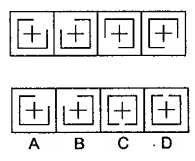
(a) 1 (b) 2 (c) 3 (d) 4
Ans: c
3) Capgemini logical reasoning questions- Select a figure from the below Answer Figures that will continue the same series

(a) 1 (b) 2 (c) 3 (d) 4
Ans: a
4) Some ants are parrots.
All the parrots are apples.
Conclusions:
I. All the apples are parrots.
II. Some ants are apples.
A. Only (1) conclusion follows B. Only (2) conclusion follows
C. Either (1) or (2) follows D. Neither (1) nor (2) follows
E. Both (1) and (2) follow
Capgemini logical reasoning questions
Ans: B
5) If X is the brother of the son of Ys son, how is X related to Y?
A. Son B. Cousin C. Grandson D. Brother
Ans: C
6) Statement: Population increase coupled with depleting resources is going to be the scenario of many developing countries in days to come.
Conclusions:
I. The population of developing countries will not continue to increase in the future.
II. It will be very difficult for the governments of developing countries to provide their people a decent quality of life.
a) Only conclusion I follow
b) Only conclusion II follows
c) Either I or II follows
d) Neither I nor II follows
Ans: b
Explanation
The fact given in I is quite contrary to the given statement. So, I do not follow, II mentions the direct implications of the state discussed in the statement. Thus, II follows.
7) Statement: Any student who does not behave properly while in the school brings a bad name to himself and also for the school.
Conclusions:
I. Such a student should be removed from the school.
II. Stricter discipline does not improve the behavior of the students.
a) Only conclusion I follows
b) Only conclusion II follows
c) Either I or II follows
d) Neither I nor II follows
Ans: d
Explanation
Clearly, I cannot be deduced this from the statement. Also, nothing about discipline is mentioned in the statement. So, neither I nor II follows.
8) Statement: A man must be wise to be a good wrangler. Good wranglers are talkative and boring.
Conclusions:
I. All the wise persons are boring.
II. All the wise persons are wranglers
a) Only conclusion I follows
b) Only conclusion II follows
c) Either I or II follows
d) Neither I nor II follows
Ans: d
9) Statement: A factory worker has five children. No one else in the factory has five children.
Conclusions:
a) All workers in the factory have five children each.
b) Everybody in the factory has children.
c) Some of the factory workers have more than five children.
d) Only one worker in the factory has exactly five children.
Ans: d
10) Statement: All beggars are poor.
Conclusions:
a) If A is a beggar, then A is not rich.
b) If A is not rich, then A is not a beggar.
c) All those who are poor are beggars.
d) If A is rich, then A is not a beggar.
Ans: d
11) Pointing to a photograph of a boy Suresh said, “He is the son of the only son of my mother.” How is Suresh related to that boy?
A. Brother B. Uncle C. Cousin D. Father
Ans: D
Explanation
Suresh’s mother’s only son is Suresh himself. So, the boy in the photo is Suresh’s son, i.e. Suresh is the boy’s father.
12) Given, M % N means M is the son of N, M @ N means M is the sister of N, and M $ N means M is the father of N. Which of the following shows the relation that C is the granddaughter of E?
A. C % B $ F $ E
B. B $ F $ E % C
C. C @ B % F %
D. E % B $ F $ C
Ans: C
Explanation
C is the granddaughter of E.
13) ‘Reds’ are ‘blues’, ‘blues’ are ‘whites’, ‘whites’ are ‘yellows’, ‘yellows’ are ‘oranges’, ‘oranges’ are ‘pinks’, then what is the color of the sky?
A. pinks B. blue
C. white D. yellow
Ans: white
Explanation: Sky is blue, but blues are whites
14) In a certain code, COMPUTER is written as RFUVQNPC. How is MEDICINE written in the same code?
a) MFEDJJOE
b) EOJDEJFM
c) MFEJDJOE
d)EOJDJEFM
Ans: d
Explanation
The letters of the word are written in reverse order and expect the first and the last letter all other letters are move one step forward.
15) In a certain code language: ‘dugo hui mul zo’ stans for ‘work is very hard’ ‘hui dugo ba ki’ for ‘Bingo is very smart’; ‘nano mul dugo’ for ‘cake is hard’; and ‘mul ki gu’ for ‘smart and hard’ Which of the following word stand for Bingo?
a) Jalu
b) Dugo
c) Ki
d) Ba
Ans: d
Essay Writing
Overview of the Interview Essay Process
Write your questions. Set up a time to meet with people (you will probably start with at least one in-class interview of another student). Ask questions and record the answers. Analyze the results. Write your essay.
Questions
First Campus Interview Experience My Best Friend Are we too dependent on Computers Digitization and its benefits My last vacation with Parents Are corrupt but efficient politicians better than honest but inefficient politicians Education – Importance in the development of the country Your Favorite Sports person Reservation in India Effect of Mobile Phones in Teenagers My Dream job Is Climate change real? Write an essay on ‘corporate hospitals vs medical ethics’ Write an essay on ‘Learning vs Understanding’. Spending habits drifting away financial security Child counselling place a vital role in student or children. What are the effects of video games on teenagers these days Give your views on the necessity of daily exercise and should it made compulsory in Indian education system? What do you think about social media websites like Facebook, Twitter etc and their effects in making us less social Success comes to those who take risks. Should laptop replace textbooks in schools Impact of social networking & social networking sites How technology has connect people Views on manual or automated work through software Your view on – we are depending too much on loans Education needs to be practical Spirituality in corporate world A person Education achievement depends upon family, friends and society.give your views for or against this topic Are citizens of India uses their voting power adequately.
Pseudocode Questions and Answers Model
What is a Pseudocode Test?
Pseudo Code Test Capgemini is a newly introduced Round in Placement Test. Capgemini Pseudo Coding MCQ Questions are from basic C input-output and C++, OOPS. Capgemini Coding Questions also contain some Data Structures Questions. Capgemini Pseudo Coding Papers Section in Test Paper is of very high difficulty.
Capgemini Coding MCQ Questions
C C++ OOPS Data Structures Pseudo Code
1) What will be the value of s if n=127?
Read n
i=0,s=0
Function Sample(int n)
while(n>0)
r=n%l0
p=8^i
s=s+p*r
i++
n=n/10
End While
Return s;
End Function
a) 27
b) 187
c) 87
d) 120
Ans: Option C
2) What is the time complexity of searching for an element in a circular linked list?
a) O(n)
b) O(nlogn)
c) O(1)
d) None of the mentioned
Ans: Option A
3) In the worst case, the number of comparisons needed to search a singly linked list of length n for a given element is
a) log 2 n
b) n⁄2
c) log 2 n – 1
d) n
Ans: Option D
4) Which of the following will give the best performance?
a) O(n)
b) O(n!)
c) O(n log n)
d) O(n^C)
Ans: Option A
5) Consider a hash table with 9 slots. The hash function is h(k) = k mod 9. The collisions are resolved by chaining. The following 9 keys are inserted in the order: 5, 28, 19, 15, 20, 33, 12, 17, 10. The maximum, minimum, and average chain lengths in the hash table, respectively, are
a) 3, 0, and 1
b) 3, 3, and 3
c) 4, 0, and 1
d) 3, 0, and 2
Ans: A
6) You have an array of n elements. Suppose you implement a quick sort by always choosing the central element of the array as the pivot. Then the tightest upper bound for the worst-case performance is:
a) O(n2)
b) O(nLogn)
c) Θ(nLogn)
d) O(n3)
Ans: A
7) Let G be a graph with n vertices and m edges. What is the tightest upper bound on the running time on Depth First Search of G? Assume that the graph is represented using an adjacency matrix.
a) O(n)
b) O(m+n)
c) O(n2)
d) O(mn)
Ans: C
8) Let P be a Quick Sort Program to sort numbers in ascending order using the first element as a pivot. Let t1 and t2 be the number of comparisons made by P for the inputs {1, 2, 3, 4, 5} and {4, 1, 5, 3, 2} respectively. Which one of the following holds?
a) t1 = 5
b) t1 < t2
c) t1 > t2
d) t1 = t2
Ans: C
9) How will you find the minimum element in a binary search tree?
a) public void min(Tree root)
{
while(root.left() != null)
{
root = root.left();
}
System.out.println(root.data());
}
b) public void min(Tree root)
{
while(root != null)
{
root = root.left();
}
System.out.println(root.data());
}
c) public void min(Tree root)
{
while(root.right() != null)
{
root = root.right();
}
System.out.println(root.data());
}
d) public void min(Tree root)
{
while(root != null)
{
root = root.right();
}
System.out.println(root.data());
}
Ans: a
10) Express -15 as a 6-bit signed binary number.
a) 001111
b) 101111
c) 101110
d) 001110
Answer: b
Explanation: The first 4 1s from the right represent the number 15, 2 more bits are padded to make it 6 digits and the leftmost bit is a 1 to represent that it is -15.
11)Which is the predefined method available in Java to convert decimal to binary numbers?
a) toBinaryInteger(int)
b) toBinaryValue(int)
c) toBinaryNumber(int)
d) toBinaryString(int)
Answer: d
Explanation: The method toBinaryString() takes an integer argument and is defined in java.lang package. Usage is java.lang.Integer.toBinaryString(int) this returns the string representation of the unsigned integer value.
12)What is the time complexity for converting decimal to binary numbers?
a) O(1)
b) O(n)
c) O(logn)
d) O(nlogn)
Answer: c
Explanation: Since each time you are halfing the number, it can be related to that of a binary search algorithm, hence the complexity is O(logn).
13)What is the time complexity of the above code?
a) O(logn)
b) O(n)
c) O(1)
d) O(nlogn)
Answer: b
Explanation: All the characters in the string have to be processed, hence the complexity is O(n).
GROUP DISCUSSION TOPICS
A.I. in work: How it is going to change future of workspace 2. Discuss on the quote by Mark Zuckerberg "We don't make services to make more money, we make money to make better services" 3. Long term capital gains tax - Who are the winners and who are the losers? 4. Is India becoming a refugee hub? 5. Can management be taught or is it inherent to oneself? 6. Gender sensitivity is gender equality concern? 7. Is India ready for cashless economy? 8. Aadhar: Infringement of privacy or not? 9. Crypto Currency/ Bitcoin 10. Bollywood’s claim of Artistic license v/s Social sensitivities 11. Is Indian demographic dividend being underutilized? 12. India should move to a Presidential form of Government. 13. Is population of India an asset or liability? 14. ‘Right to privacy’ is in danger in India. 15. With increasing unemployment, India should ban all its efforts on self-driving cars. 16. Government should not bail out nationalized banks which are bankrupt. 17. Should India finance its infrastructure through internal finances or external borrowings? 18. Planning commission or NITI Aayog- has anything changed at ground level? 19. Is UDAAN scheme just beneficial on paper or will it have effects on the ground level? 20. Data and digitization are no solutions to agrarian distress.
Capgemini Technical Interview Questions and Answers
1) Difference between C and C++?
The major difference between C and C++ is that C is a procedural programming language and does not support classes and objects, while C++ is a combination of both procedural and object-oriented programming languages; therefore C++ can be called a hybrid language.
2) What is a null pointer?
When referring to computer memory, a null pointer is a command used to direct a software program or operating system to an empty location in the computer memory. Commonly, the null pointer is used to denote the end of a memory search or processing event. In computer programming, a null pointer is a pointer that does not point to any object or function.
A nil pointer is a false value. For example, 1 > 2 is a nil statement.
In the programming language C, NULL is an available command that can be used, where nil is an available command used in the Pascal programming language.
3) What are the 4 basics of OOPS?
Abstraction, Inheritance, Encapsulation, and Polymorphism.
4) What do you mean by Object-Relational DBMS?
An object-relational database (ORD), or object-relational database management system (ORDBMS), is a database management system (DBMS) similar to a relational database, but with an object-oriented database model: objects, classes, and inheritance are directly supported in database schemas and in the query language. In addition, just as with proper relational systems, it supports the extension of the data model with custom data types and methods.
5) Structural difference between bitmap and b-tree index?
Btree
It is made of branch nodes and leaf nodes. Branch nodes hold prefix key values along with the link to the leaf node. The leaf node in turn contains the indexed value and rowed.
Bitmap
It simply consists of bits for every single distinct value. It uses a string of bits to quickly locate rows in a table. Used to index low cardinality columns.
6) What is database Schema?
The formal definition of database schema is a set of formulas (sentences) called integrity constraints imposed on a database.
7) What are the different levels of database schema?
Conceptual schema- a map of concepts and their relationships.
Logical schema- a map of entities and their attributes and relations
Physical schema- a particular implementation of a logical schema
Schema object- Oracle database object
8) What is the difference between foreign keys and reference keys?
Reference Key is the primary key that is referenced in the other table (linked via the other tables Foreign Key). Foreign Key is how you link the second table to the primary tables Primary Key (or Reference Key).
9) Tell me about DSN?
A Data Source Name (DSN) is the logical name that is used by Open Database Connectivity (ODBC) to refer to the drive and other information that is required to access data. The name is used by Internet Information Services (IIS) for a connection to an ODBC data source, such as a Microsoft SQL Server database.
10) Difference between Clustered index and non clustered index?
Clustered Index
Only one per table
Faster to read than non clustered as data is physically stored in index order
Non-Clustered Index
Can be used many times per table
Quicker for insert and update operations than a clustered index
Capgemini HR Questions
1) Tell Me About Yourself?
2) What are your greatest strengths?
3) Do you have any Blind Spots?
4) Why should I hire you?
5) Why did you leave your last job?
6) Where do you see yourself 5 years from now?
7) Describe your management style?
8) Are you a Team Player?
9) How would you be an asset to our Organizations?
10) Do you have any questions for me?
Want to Get Placed Immediately →→
Prepare effectively for interviews before taking the next step with our dedicated placement preparation platform.






















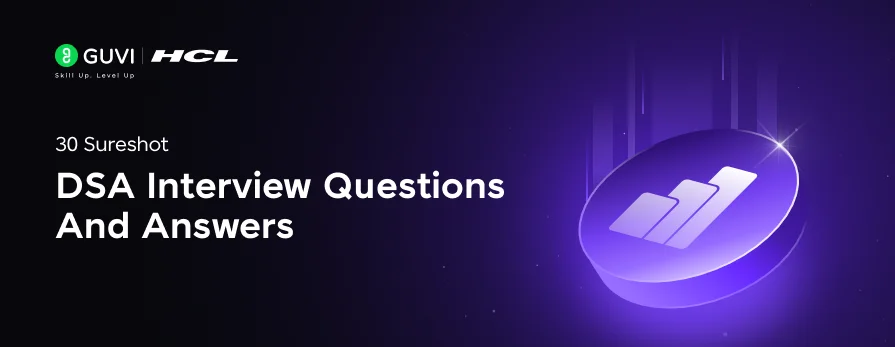

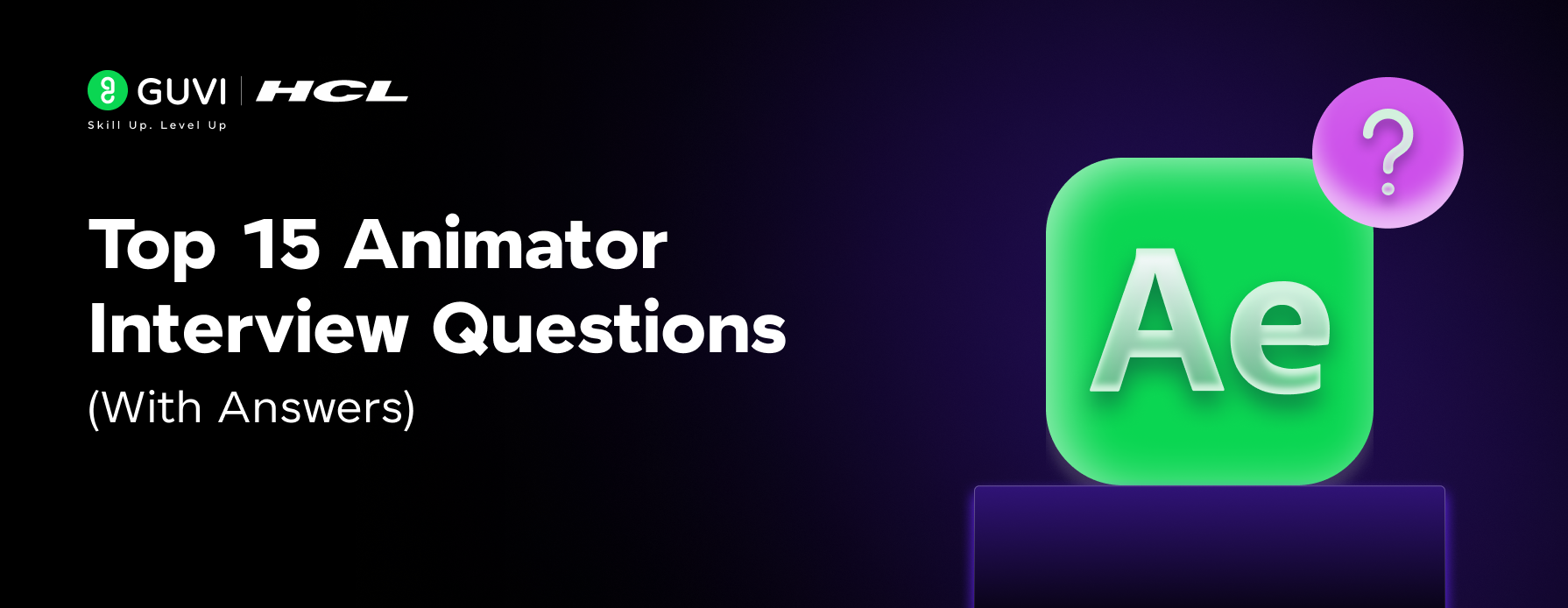
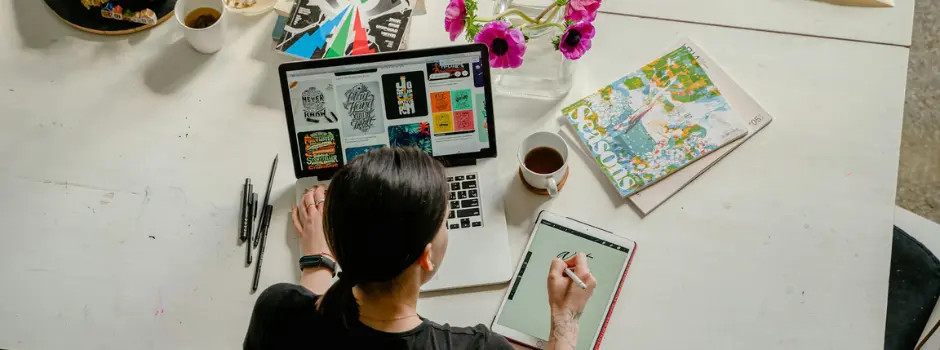

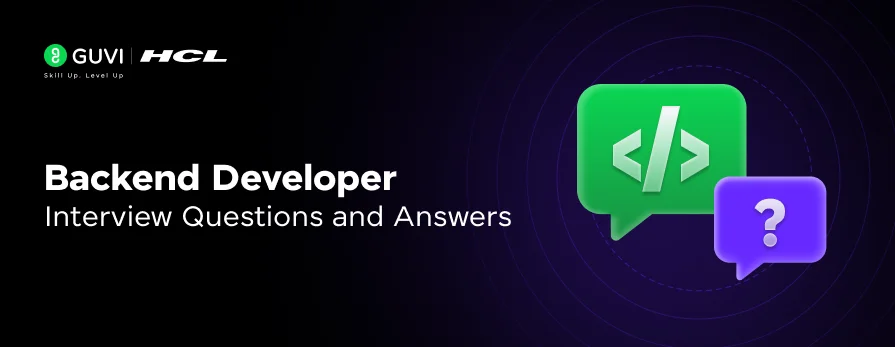
![Top 35+ AWS Interview Questions and Answers [2025] 11 aws interview questions](https://www.guvi.in/blog/wp-content/uploads/2025/07/aws-interview-questions.webp)
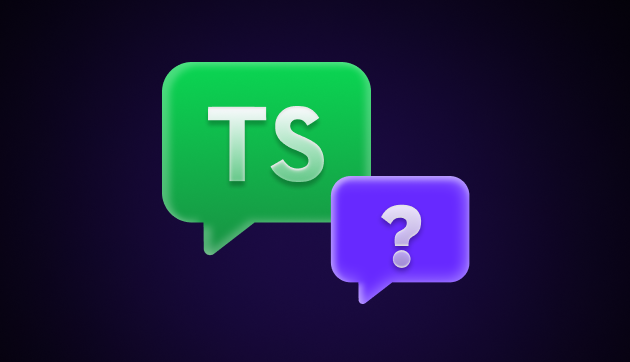

Did you enjoy this article?